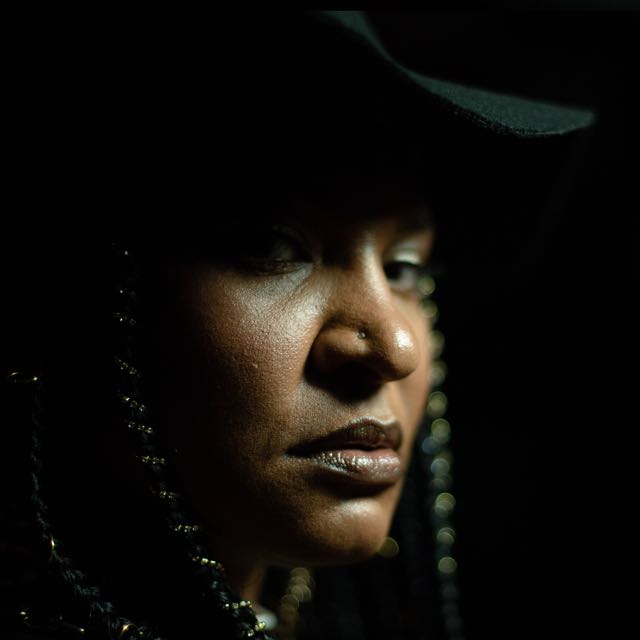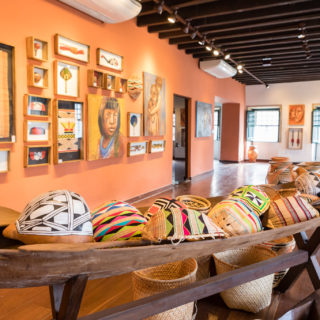
Meet 09 women who have changed (and still do) the history of Bahia and Salvador
In different areas, women had great importance, from the Independence of Bahia to the present day, in the judiciary, in the feminist struggle, in music, in religion and much more
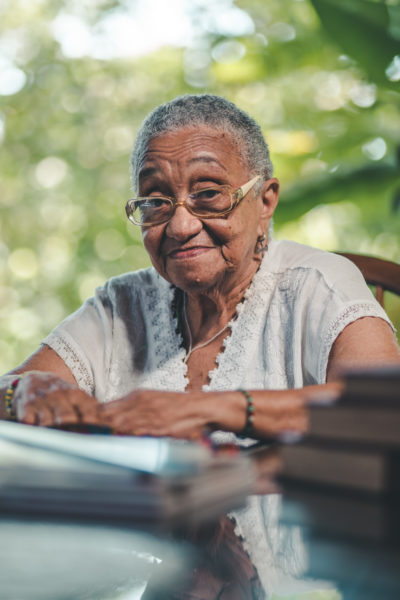
If you are in Salvador, stop to look around and notice how strong female representation is in Bahia. An example of this are the Candomblé terreiros, in which women were able to occupy leadership spaces, in what is a hierarchical religion. However, throughout history, we have many other examples of women who made a difference in the construction of the state and others who continue to fight for their ideals, changing their reality and inspiring other women.
Therefore, Visit Salvador da Bahia will give you a helping hand to let you know the story of incredible women who are true inspirations of struggle and resistance in the history of Bahia and Salvador. Maria Quitéria, Joanna Angélica, Maria Felipa, Zeferina and the contemporary Carla Akotirene, Livia Vaz, Negra Jhô, Larissa Luz and Egbomi Cici are icons that you need to know and will know from now on.
Women at war
To begin, the three female icons who had a great participation in the struggle for the Independence of Brazil in Bahia, in 1823 (without forgetting others who also fought in some way): Maria Quitéria, Joana Angélica and Maria Felipa.
Fight like a girl
Maria Quitéria de Jesus was born in Feira de Santana in 1792 and was a Bahian fighter of the Brazilian War of Independence in Bahia. In 1821, she fled from the farm where she lived with her family and, under her male identity, joined the Prince’s Battalion of Volunteers, also known as the Battalion of Parakeets. Later, Maria Quitéria’s father sought out the battalion and said that she was a woman. As she was already recognized for her efforts, discipline and ease with weapons, the major did not allow her to be dismissed from the army.
After adopting her real name, Maria Quitéria changed the male uniform for skirts and props. Her courage to join a male milieu drew the attention of other women, who joined the troops and formed a group led by Quitéria.
She served in the artillery regiment and was elevated to 1st cadet by General Pedro Labatut. After the war, she was awarded the Imperial Order of the Cruise by the emperor Pedro I of Brazil, who also granted her a life-long Alferes rank.
She is recognized for being the first woman to be incorporated by a military unit of the Brazilian Armed Forces. Maria Quitéria became a symbol of female emancipation and an example for women across the country. Since 1996, she has been the patron of the Brazilian Army’s Complementary Staff of Officers.
Martyr in the struggle for independence
Joanna Angélica de Jesus was born on December 12, 1761, the daughter of an elite family in Bahia, and was also a martyr in the struggle for Brazil’s independence in Bahia. She stood out for her bravery when facing Portuguese troops willing to invade the Lapa Convent, which is on Avenida Joanna Angélica, in the city center. At the age of 21, the young woman entered the Lapa Convent and, in 1815, became Abbess, a religious position granted to the superior of a monastery of nuns.
In 1822, months before the Independence of Brazil, tension between the Portuguese and Bahians increased after the attack on São Pedro Fort, where the Soteropolitan fighters were housed. On that same date, Portuguese troops headed towards the Lapa Convent in search of Bahian fighters and had the resistance of Joana Angélica, who placed herself in front of the Convent to try to prevent the invasion.
Despite the act of bravery, Joanna Angélica was murdered with a bayonet blow by the Portuguese, who soon afterwards entered the religious temple. In 1922, the Geographical and Historical Institute of Bahia celebrated the first Centenary of the martyrdom of Mother Joanna Angélica de Jesus. In 2001, the Lapa Convent requested the inclusion of research on supporting documents of Mother Joanna Angélica’s martyrdom, so that the canonical process of the nun’s beatification became possible, but the process has not yet been completed.
The seafood that changed history
Still talking about the heroines who acted in the Independence of Bahia, Maria Felipa de Oliveira was born on the Island of Itaparica, according to research, on July 4, 1873. The little that is known about her comes from oral tradition and, according to reports, she was a fisherwoman and manual worker.
In the struggle for independence, Maria Felipa would have led a group of 200 people, including black women, Tupinambás and Tapuias Indians, in the battles against the Portuguese who attacked the Island of Itaparica, starting in 1822. The group was responsible for burning numerous Portuguese vessels, reducing the colonizing power in the course of the battle.
Even after the declaration of independence, she continued to mobilize this group, and it is reported that she beat up a Portuguese guard at a fort located in Itaparica.
“With that, we realized that, even after Brazil’s independence, the issues that affected the black population were still present and made women like Maria Felipa mobilize in defense of their people”, highlights the historian and master’s student in education, Luana Soares .
Maria Quitéria, Joana Angélica and Maria Felipa were declared, on July 26, 2018, as Heroines of the Brazilian Nation by Federal Law No. 13,697, having their names inscribed in the “Book of Heroes and Heroines of the Motherland”, which is found in the “Panteão da Pátria e da Liberdade Tancredo Neves “, located in Brasília, Federal District.
Zeferina and her Quilombo
Another female leader worth mentioning is Zeferina, a slave who lived in Salvador in the 19th century. Of Angolan origin, in the first half of the 19th century, she was brought as a child to Brazil in her mother’s (Amália) arms, straight to Salvador.
Slave and with a transgressive personality, she suffered the atrocities that slavery imposed on her and started fighting for freedom, being welcomed by other quilombolas who already lived in the region. It was then that Zeferina founded the Quilombo do Urubu – today corresponding to the region of the Pirajá neighborhood and Parque São Bartolomeu, in Salvador – and became an important character of the black uprisings in Bahia in the 19th century.
A brave woman, she organized Indians, fugitive and freed slaves who wanted freedom for all black people in the province of Salvador. On December 17, 1826, using only a bow and arrow, Zeferina led the local population in an uprising against the attack by police troops on the quilombo, which had a strong connection with Candomblé, with religious persecution being one of the possible reasons to enhance the attack at the site.
Zeferina led 50 men and some women against more than 200 men with guns and horses, who, in the end, managed to arrest only one man and one woman, Zeferina herself. The title of “queen” was given to her by the president of the province, the highest authority of that time in Bahia, after her arrest. Zeferina did not return to Quilombo do Urubu. The conditions of her death were never properly clarified, and the location of her remains was not informed.
“Zeferina is a reference of resistance. She made a choice for her people, fought and left a legacy to be followed, but it is worth mentioning that Zeferina did not act alone and the whole community followed her in the fight. The fight is always collective”, highlights Silvia Maria Barbosa Silva, researcher and general coordinator of the Association of Black Women – Quilombo Zeferina, located in the Pirajá neighborhood.
Modern heroine
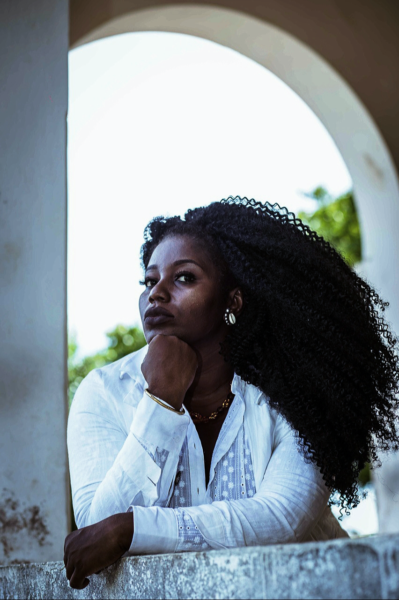
But anyone who thinks that we currently don’t have our heroines is mistaken. Researcher Carla Adriana da Silva Santos, Carla Akotirene, is one of them. She is the author of the literary works “O que é interseccionalidade?” (What is intersectionality?) and “Ó Pa Í, Prezada!”, both published by the Feminismos Plurais collection, idealized by the philosopher Djamila Ribeiro. Since her early childhood in the Caixa D’água neighborhood, here in Salvador, she never thought she would become an intellectual reference.
Daughter of a retired street vendor, Carla Akotirene suffered sexual violence at 13 and 15 years old and has worked as a “cordeira” and security guard for the Afro block Ilê Aiyê in the 90s. Between 1998 and 1999 she studied Clinical Pathology at the Anísio Teixeira Institute (IAT) and took the Social Service course at the Catholic University of Salvador (UCSAL), integrating Pompa (Projeto Mentes e Portas Abertas – Open Minds and Doors Project), from the Steve Biko Institute, at the age of 24, where she studied alongside 21 other young black students. The classes were led by names such as: Joaquim Barbosa, Luiza Bairros, Luiz Alberto, Vilma Reis, Elias Sampaio, Matilde Ribeiro, Fernando Haddad, among others.
Under the guidance of the Yalorixá Makota Valdina, at the age of 25 the researcher inherited the name of Makota Irene (Akotirene), a female priestess who assisted the quilombolas during the period of abolitionist struggle in Brazil.
Carla has been involved in the following projects and actions: Nucleus of black students Matilde Ribeiro; Black Community Development Council; coordination of a national campaign against the extermination of black youth; racial equality conferences, policies for women and youth; research on lethal violence and mapping of adolescents and young people who die in inpatient units; and Escola Plural project, by Instituto Ceafro. In the last few years, she was a professor at a federal university, completed her master’s degree and created Opará Saberes, to contribute to the entry of black people in postgraduate studies at public universities.
This year, on February 8, 2020, she returned to Senzala do Barro Preto as Carla Akotirene, special honoree of the 41st Night of Black Beauty.
“I had no intention of being a writer today, finishing a doctorate. We don’t have to be guilty of assuming our potential. We came here to create great transformations”, she points out.
Combating Racism
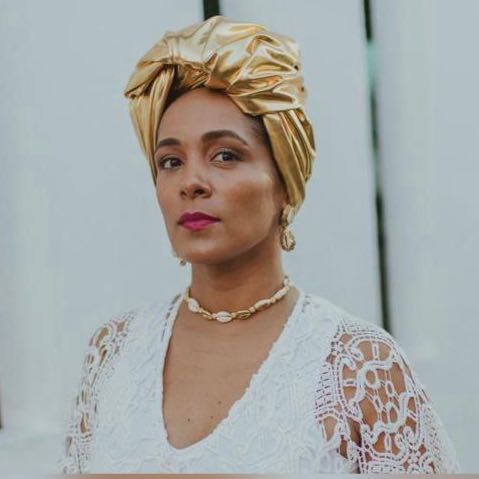
The prosecutor of the Public Ministry of Bahia, Livia Maria Santana Vaz, also has a trajectory that deserves to be known. She holds a BA in Social Communication – Public Relations, from the State University of Bahia (2005) and in Law from the Federal University of Bahia (2003). She is a Master in Public Law, from the Federal University of Bahia (2006); doctoral student in Legal and Political Sciences at the Faculty of Law of the University of Lisbon; and PhD student in Law at the University of Paris I – Sorbonne.
She joined the public prosecution in Bahia in 2004, worked in the cities of Brejões, Macaúbas, Seabra and Itabuna until she arrived in Salvador. In the capital, she began her specific role in the Public Prosecutor’s Office to Combat Racism and also started to coordinate, in 2015, the Special Action Group for the Protection of Human Rights and Combating Discrimination of the MPBA (GEDHDIS).
Livia Maria was recognized as one of the 100 Most Influential People of African Descent (MIPAD) in the world, in the “great legal minds” category, for her work in combating racism and religious intolerance, in the edition of Law & Justice in support of United Nations International Decade for People of African Descent (2015-2024).
MIPAD is an initiative that identifies major actors of African descent with positive contributions around the world. The recognitions are part of the agenda of the United Nations International Decade for People of African Descent, which began in 2015 and will continue to present these leaders until 2024.
For her, it is a great honor to compose a list like this, which means the recognition of the work to combat racism, to fight religious intolerance and to promote racial equality with the MP.
“To be a black woman in the Brazilian justice system, in a structurally racist society like ours, is to be an exception that confirms the rule, which is the exclusion of black people from spaces of power and decision. We need to naturalize our presence in these spaces of power and convince public and private institutions that it is necessary to centralize the discussion on race so that democracy in our country is realized” she says.
The precursor in enhancing natural hair
And if you like a good laugh, pay attention to this name: Valdemira Telma de Jesus Sacramento, Negra Jhô. Born in Quilombo da Muribeca, district of São Francisco do Conde, a municipality located just over 70 km from Salvador, Negra Jhô is 54 years old and specializes in the art of braids, head scarves and turbans, and does her job in a big house, number four on Rua Frei Vicente, in Pelourinho.
She changed the scenery of the Historic Center when she arrived there in the late 1970s, contributing to the emancipation of black identity, since she is also a precursor in the valorization of natural hair.
“Women sit in my chair and stand up as queens”, she points out.
Today, her work is a reference in afro hair, and Negra Jhô is sought after by tourists, celebrities and Bahians. She is also a dancer, actress, writer and commands the Kimundo Institute, which seeks to keep African Culture alive and preserve ethnic values, developing activities that value the self-esteem of women of any ethnicity, as well as their strength, beauty, dance and freedom.
Negra Jhô teaches the appreciation of color, hair, black beauty, through the art of hair ornamentation (braids) and turbans, in addition to promoting workshops for children and adolescents, including partnerships with various institutions such as: schools; colleges; quilombola communities; Bloco Afro & Escola Olodum; Filhos de Gandhy; Ilê Aye; Didá Band; Irmã Dulce Hospital; Deam (Police station for the protection of women); Axé Project; among many others.
One of Negra Jhô’s main dreams is to see her son, rapper Afro Jhow, become successful with his compositions. Negra Jhô also annually promotes the famous Feijoada da Negra Jhô, which begins with a procession of a group of musicians and dancers, in a celebration of the Orixás and entities of manifestations of the African matrix culture. The “FeiJhôada” is composed by dance, parade of afro aesthetics and music-cultural presentations that mix samba, afro, pagode, semba, kuduro and axé. In 2003, she was considered the symbol of Bahian carnival. In Rio de Janeiro, the samba school Nenê de Vila Matilde paid her homage.
A power on stage and in speech
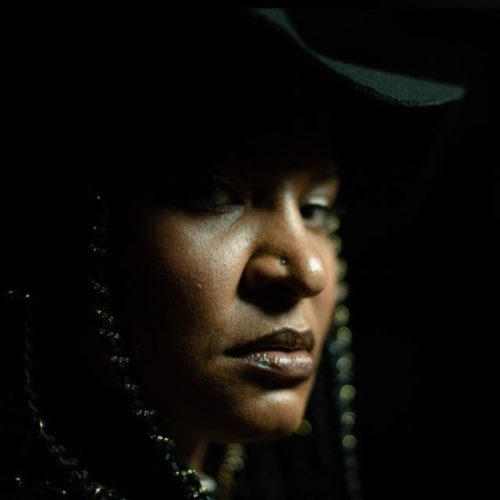
Have you seen what inspiring story? Larissa Luz de Jesus is no different. Singer, songwriter and actress, the soteropolitan is the daughter of a Portuguese teacher and grew up in a scenario composed of books and music. She lived in the districts of Nordeste de Amaralina and Rio Vermelho. At the age of ten, she started studying singing and keyboard and, a little later, took a free guitar course at the Federal University of Bahia (Ufba). It was there that she began to perform in shopping centers in the city.
Larissa Luz participated in other artistic movements, such as a drawing contest, and her piece became known throughout Bahia. Over the years, she improved her knowledge in the area of music and theater, leaving drawing behind. She sang in bars in Salvador, such as Pedra da Sereia, and then in the bands Lucy in the Sky, Egrégoras and in the group Interart, a dance group, through which she made several presentations on ships.
In 2007, she became the vocalist for the band Araketu after Tatau left. However, she left the band in 2012, when the former singer returned to be part of the group.
“It was a big challenge, but I loved it, because I was able to learn many things, meet many people that I never imagined I would. So I am grateful to have been able to live this experience”, she explains.
Currently, the artist lives between the Rio and São Paulo axis and identifies herself with the afrofuturism and afro-punk aesthetic movements, and uses her art to rescue her roots and fight for black representation, through what she calls “Bahian, futuristic and ancestral music”.
She was nominated for the 2016 Latin Grammy in the category of “Best Contemporary Pop Album in Portuguese Language” for the album “Território Conquistado”. In 2018, she played Elza Soares in the musical play “Elza”. In the role of Elza, the singer recalls the rescue of her origins and talks about the process of connecting with her own cycles: “For me, a strong woman is one who looks at the women around her and holds the hands of each one of them”, she highlights. In 2019, she was the official interpreter of São Clemente, where she formed a trio with Bruno Ribas, and Leozinho Nunes.
Ancestral knowledge
To conclude, we are going to introduce you to one of the great griô masters in the country, a practice based on oral tradition for the transmission of cultural knowledge. Nanci de Souza Silva, Ebomi Cici de Oxalá, or simply Grandma Cici, began to discover this gift of storytelling at the age of 21, when her mother had two more children and she was forced to take care of her two brothers, lulling and telling stories.
“I learned a lot by listening and telling. Over time, I went to study, work and always reading more and more. After my initiation in Candomblé, I got to know the traditions, which are passed on while we are alive, and each one tells in their own way an explanation of life”, she says.
Since then, for those who stop to listen to her, she doesn’t just tell the stories, but explains the languages, the tradition, the music, everything she knows about the Afro-Brazilian matrix.
At the Pierre Verger Cultural Space, Grandma Cici works with children at high risk and with researchers from Afro-Brazilian culture. She has performed in several Brazilian cities and also abroad, such as in Cuba, France and the United States, with her storytelling. She worked for a long time with photographer Pierre Verger, making captions for 11,000 photographs linked to Afro-Brazilian culture and Benin, Togo, Ghana, Nigeria and North Africa.
At 81 years old, with a great willingness to learn and teach, Grandma Cici regrets the pandemic, as she is no longer able to travel to do her enchanting work.
“Those who are concerned with this resting business are the young ones. I will rest when I die”, she jokes.
With all her wisdom and sweetness, Egbomi, Grandma Cici teaches us that, despite the challenges imposed by age, it is still possible to be a living source of connection with our ancestry.
Cristiele France
Journalist
About the collaborator: Cristiele França is Ekedji from Ilê Asé Oya Mesi. She is a journalist, makes the Mojubá program of the Metrópole Group and is a press officer at the Municipal Department of Education. It’s worth knowing her YouTube channel at this link.
Footnote:
BARBOSA, Silvia Maria Silva. O poder de Zeferina no Quilombo do Urubu: uma reconstrução histórica político-social. Novas Edições Acadêmicas. 2015. (BARBOSA, Silvia Maria Silva. Zeferina’s power in Quilombo do Urubu: a historical political-social reconstruction. New Academic Editions. 2015.)
Luana Soares – Historian and Master’s Student in Education and Contemporaneity by UNEB. Feminist and anti-racist activist, she is part of the World March of Women. Currently, she is part of the Policy Coordination Team for Traditional Peoples and Communities, an organ of the Government of the State of Bahia.
Websites:
https://revistatrip.uol.com.br/tpm/larissa-luz-relembra-o-resgate-de-suas-origens-conexao-com-os-proprios-ciclos-buscofemfacebook.com/guianegro
https://www.revistacontinente.com.br/edicoes/225/ebomi-cici–humildade–sabedoria-e-docura
https://en.wikipedia.org/wiki/Maria_Quit%C3%A9ria
https://en.wikipedia.org/wiki/Joana_Ang%C3%A9lica
https://pt.wikipedia.org/wiki/Maria_Felipa_de_Oliveira
Summary: Visit Salvador da Bahia inspires you with the life stories of Maria Quitéria, Joana Angélica, Maria Felipa, Zeferina and contemporary Carla Akotirene, Livia Vaz, Negra Jhô, Larissa luz and Egbomi Cici

